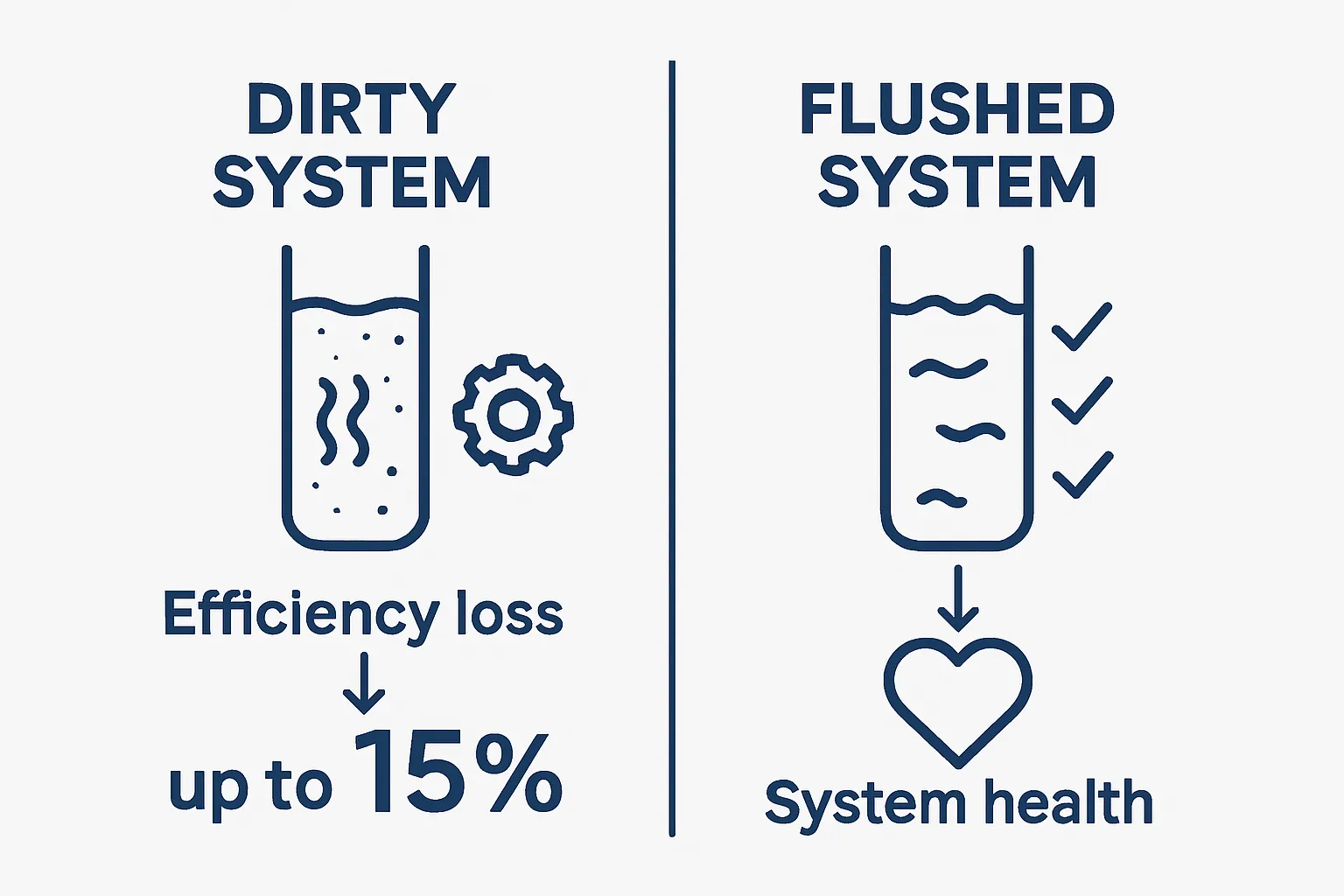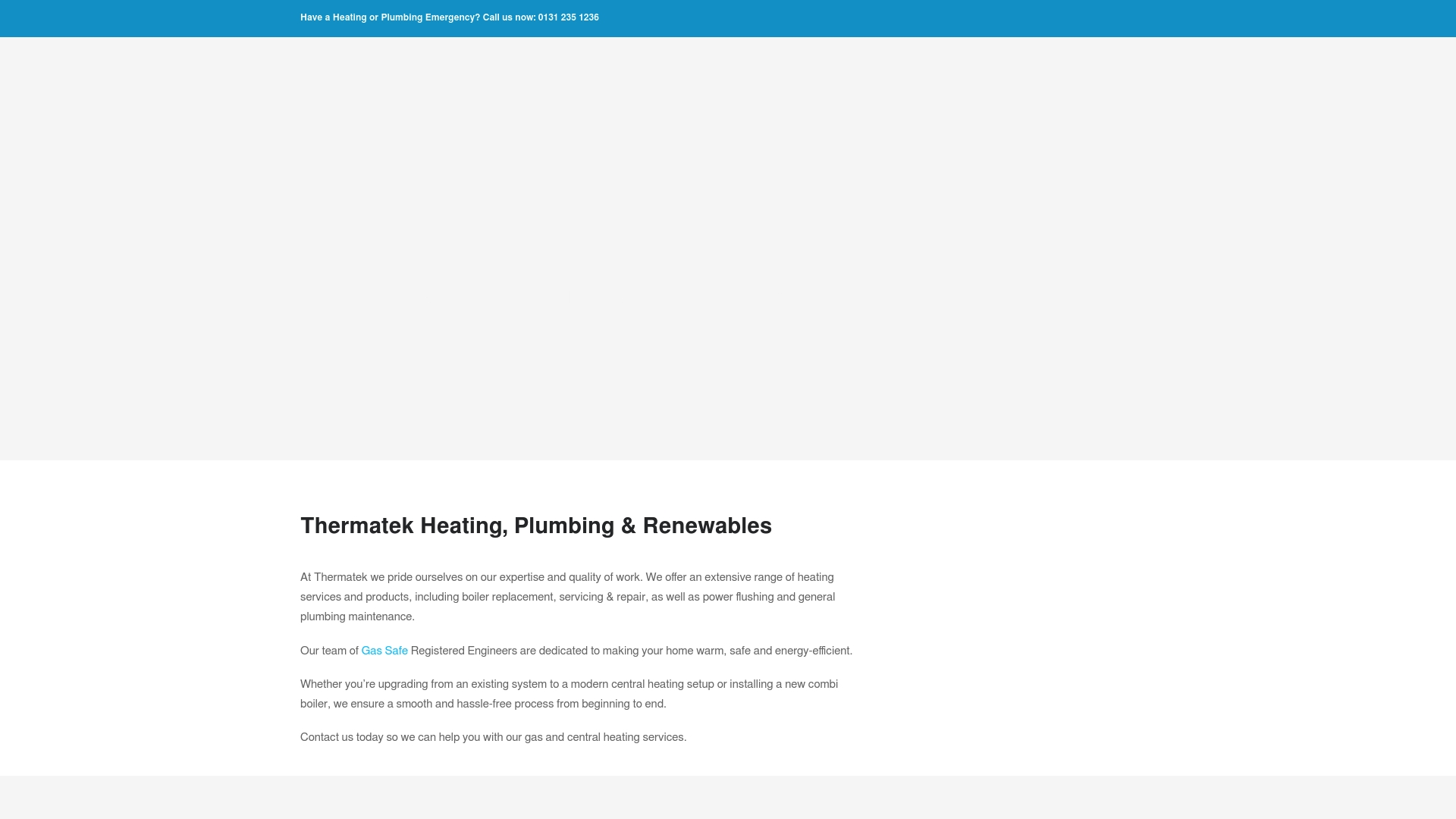What is Power Flushing? Understanding Its Importance
Most people think of radiators and boilers as simple background fixtures quietly keeping homes warm. Yet hidden beneath the surface, sludge buildup can quietly drag your energy efficiency down by as much as 30 percent over time. What few realise is that a simple power flushing treatment could rescue your entire system from early failure and deliver savings you never knew were slipping away.
Table of Contents
- Defining Power Flushing: A Comprehensive Overview
- The Importance Of Power Flushing For Heating Systems
- How Power Flushing Works: The Science Behind It
- Key Concepts In Power Flushing: Understanding The Process
- The Benefits Of Power Flushing For Homeowners And Landlords
Quick Summary
| Takeaway | Explanation |
|---|---|
| Regular power flushing enhances heating efficiency. | Power flushing removes sludge and debris, improving system performance by up to 15%. |
| Investing in power flushing can save money. | It reduces energy costs and prevents costly repairs, extending system lifespan significantly. |
| Professional assessment is crucial before power flushing. | A thorough diagnostic evaluation ensures all system components are effectively treated. |
| Power flushing prevents future heating issues. | By addressing internal contamination, it minimises risks of system breakdowns and cold spots. |
| Landlords benefit from regular power flushing. | This maintenance meets legal safety standards while ensuring tenant comfort and system reliability. |
Defining Power Flushing: A Comprehensive Overview
Power flushing represents a critical maintenance procedure designed to clean and restore the efficiency of central heating systems by removing accumulated debris, sludge, and contaminants from pipework and radiators. Unlike standard cleaning methods, power flushing uses high-pressure water and specialised chemical treatments to comprehensively clear out blockages that can significantly reduce heating performance.
The Science Behind Power Flushing
At its core, power flushing addresses the gradual build-up of magnetite (iron oxide) and other particulate matter within heating systems. These contaminants accumulate over time, forming a thick, muddy substance known as central heating sludge. According to British Heating and Plumbing Magazine, this sludge can reduce heating system efficiency by up to 15% and potentially cause long-term damage to boilers and radiators.
The power flushing process involves several key scientific principles:
- Utilising high-velocity water flow to dislodge and remove stubborn debris
- Introducing specialised cleaning chemicals that break down mineral deposits
- Applying reverse-flow techniques to ensure comprehensive system cleaning
- Neutralising chemical reactions that contribute to corrosion and scale build-up
Understanding System Impact and Benefits
Power flushing goes beyond simple maintenance, offering substantial benefits for residential and commercial heating systems. Energy Efficiency Institute research indicates that regular power flushing can:
- Improve overall heating system efficiency
- Extend the lifespan of boilers and radiators
- Reduce energy consumption and associated utility costs
- Prevent potential expensive repair or replacement scenarios
By systematically removing internal system contamination, power flushing ensures that heating networks operate at peak performance, delivering consistent warmth while minimising potential long-term mechanical complications.
The Importance of Power Flushing for Heating Systems
Heating system efficiency and longevity depend significantly on regular maintenance, with power flushing emerging as a critical intervention strategy. By systematically addressing internal system contamination, power flushing prevents potential catastrophic failures and ensures optimal performance across residential and commercial heating networks. Central Heating Power Flushing In Edinburgh – Thermatek Heating emphasises the crucial role of this maintenance procedure in preserving heating system functionality.
Economic and Performance Implications
The economic rationale for power flushing extends far beyond simple maintenance. According to Energy Saving Trust, poorly maintained heating systems can lose up to 30% of their operational efficiency, resulting in substantially higher energy consumption and increased utility expenses. This efficiency degradation stems from several key factors:

- Accumulated debris restricting water circulation
- Reduced heat transfer capabilities
- Increased strain on boiler components
- Potential premature system failure
Long-Term System Health and Reliability
Power flushing represents a proactive approach to heating system management, addressing potential issues before they escalate into expensive repairs. Professional engineers recommend this procedure as a preventative measure to:
- Eliminate corrosive materials that cause system deterioration
- Restore optimal heat distribution across radiators
- Prevent cold spots and uneven heating performance
- Minimise the risk of unexpected system breakdowns
By investing in regular power flushing, homeowners can significantly extend their heating system’s operational lifespan, reduce potential repair costs, and maintain consistent thermal comfort throughout their property.
How Power Flushing Works: The Science Behind It
Power flushing represents a sophisticated heating system restoration technique that combines advanced fluid dynamics, chemical treatments, and precision engineering to comprehensively clean internal pipework and radiator networks. Annual Boiler Servicing In Edinburgh – Thermatek Heating recognises this procedure as a critical maintenance intervention that goes far beyond traditional cleaning methods.
Mechanical Principles of Cleaning
The fundamental mechanism of power flushing relies on high-velocity water circulation and targeted chemical treatments. According to Heating Engineering Research Institute, the process utilises specialized equipment that generates powerful water flows capable of dislodging and removing accumulated system contaminants. These mechanical principles involve:
- Generating water pressures between 3-4 bars
- Creating turbulent flow patterns to maximise debris removal
- Implementing multi-directional water circulation
- Using precise flow control mechanisms
Chemical Treatment and Contamination Removal
Chemical interventions play a crucial role in the power flushing process, transforming how internal system contaminants are neutralised and extracted. The chemical treatment stage involves:
- Introducing pH-balanced cleaning agents
- Breaking down magnetite and mineral deposits
- Neutralising corrosive compounds
- Preventing future scale and rust formation
These chemical treatments work synergistically with mechanical flushing techniques, ensuring a comprehensive system restoration that addresses both physical debris and potential chemical degradation mechanisms. By combining advanced fluid dynamics with targeted chemical interventions, power flushing provides a holistic approach to heating system maintenance and performance optimization.
To help clarify the distinctions and contributions of both mechanical and chemical processes within power flushing, the following table summarises their core characteristics and roles.
| Aspect | Mechanical Principles | Chemical Treatments |
|---|---|---|
| Method | High-velocity water circulation | Introduction of specialised cleaning agents |
| Purpose | Dislodge and remove physical debris | Break down and neutralise chemical contaminants |
| Process Features | Turbulent, multi-directional flow | pH-balanced, targeted chemical action |
| Main Targets | Sludge, blockages, particulate matter | Magnetite, mineral deposits, corrosives |
| Benefits | Clears pipework and radiators | Prevents corrosion, scale, and future build-up |
| Role in System Restoration | Physical cleansing and improvement | Chemical stabilisation and protection |
Key Concepts in Power Flushing: Understanding the Process
Power flushing represents a sophisticated heating system maintenance technique that demands precise understanding of its core principles and operational mechanisms. Professional heating engineers emphasise the critical nature of comprehensive system assessment and targeted intervention strategies. News – Thermatek Heating highlights the importance of advanced technical knowledge in executing effective power flushing procedures.
System Contamination and Diagnostic Assessment
Before conducting a power flush, heating professionals must perform a comprehensive diagnostic evaluation of the system’s condition. UK Parliamentary Research indicates that effective power flushing requires a meticulous assessment to ensure all circuits and components receive thorough treatment. Key diagnostic considerations include:
- Identifying magnetite and sludge accumulation patterns
- Measuring system water quality and pH levels
- Evaluating radiator and pipework temperature consistency
- Assessing potential corrosion indicators
Chemical and Mechanical Intervention Strategies
Power flushing integrates sophisticated chemical treatments with precision mechanical techniques to restore heating system performance. The intervention process focuses on:
- Introducing targeted cleaning agents
- Generating high-velocity water circulation
- Implementing multi-directional flushing techniques
- Neutralising internal system contaminants
By systematically addressing both physical debris and chemical degradation mechanisms, power flushing provides a comprehensive approach to heating system restoration. This method ensures optimal thermal efficiency, reduces potential long-term damage, and extends the operational lifespan of critical heating infrastructure.
The Benefits of Power Flushing for Homeowners and Landlords
Power flushing offers substantial advantages for property owners, providing a proactive maintenance strategy that safeguards heating infrastructure and optimises system performance. Landlord Gas Safety Certificates In Edinburgh – Thermatek Heating recognises the critical role of comprehensive heating system maintenance in property management.
Financial and Performance Advantages
For homeowners and landlords, power flushing represents a strategic investment with measurable economic benefits. According to Which? Trusted Traders, regular system maintenance can reduce energy consumption and prevent costly repairs. Key financial benefits include:
- Reducing annual heating costs by up to 15%
- Preventing expensive boiler replacements
- Extending heating system operational lifespan
- Minimising unexpected repair expenses
Property Management and Compliance Considerations
Landlords face unique challenges in maintaining rental property heating systems, with legal and safety obligations playing a crucial role. Power flushing contributes significantly to meeting these requirements by:
- Ensuring consistent heating performance
- Maintaining system reliability for tenant comfort
- Demonstrating proactive property maintenance
- Supporting compliance with rental property standards
By implementing regular power flushing, property owners protect their investment, reduce long-term maintenance costs, and provide safe, efficient heating environments for residents. This approach transforms heating system maintenance from a reactive task to a strategic property management tool.
This table organises the primary financial and operational advantages of power flushing for both homeowners and landlords, emphasising how it supports efficient, cost-effective, and compliant property management.
| Benefit | Description |
|---|---|
| Annual Heating Cost Reduction | Reduces ongoing energy expenses by up to 15% |
| Boiler Replacement Prevention | Minimises risk of expensive boiler breakdowns and replacements |
| Extended System Lifespan | Enhances the durability of boilers and radiators |
| Unexpected Repair Minimisation | Lowers the likelihood and cost of unplanned repair work |
| Tenant Comfort and Compliance | Ensures heating reliability and supports compliance in rental properties |
| Property Value Preservation | Helps maintain system performance for long-term asset protection |

Restore Your Heating Efficiency with Professional Power Flushing
Is your central heating system struggling with cold spots, noisy radiators or high energy bills? As highlighted in our recent article, the build-up of sludge, magnetite and debris can silently undermine both performance and reliability. Even a small amount of internal contamination may cause your system to work much harder, risking costly breakdowns and reducing comfort in your home. With so much at stake, expert intervention is not just helpful but essential for lasting peace of mind.

Take control and protect your property by choosing a Gas Safe Registered local expert. The team at Thermatek Heating specialises in thorough power flushing solutions designed for Edinburgh and Midlothian homes. Every service uses advanced techniques that target the exact issues discussed in the article, ensuring reliable performance and energy savings. Book your inspection today and enjoy a warmer and more efficient home year-round. Simply request your free quote or consultation now. Act promptly to avoid unexpected heating disruption and future repair bills.
Frequently Asked Questions
What is power flushing and how does it work?
Power flushing is a maintenance procedure for central heating systems that uses high-pressure water and specialised chemicals to remove accumulated debris, sludge, and contaminants from pipework and radiators. It employs high-velocity water flow and chemical treatments to dislodge and eliminate blockages, restoring system efficiency.
Why is power flushing important for heating systems?
Power flushing is essential as it improves heating system efficiency, extends the lifespan of boilers and radiators, reduces energy consumption, and prevents costly repairs. Regular power flushing helps eliminate sludge build-up that can degrade system performance over time.
How often should power flushing be performed?
It is generally recommended to consider power flushing every 5 to 7 years, or sooner if you notice inefficiencies such as cold spots in radiators, unusual noises from the boiler, or increased energy bills. Regular inspection and maintenance are key in determining the right frequency for your system.
What are the benefits of power flushing for homeowners?
Power flushing offers significant benefits for homeowners, including reduced annual heating costs, prevention of expensive boiler replacements, extended operational lifespan of the heating system, and minimised unexpected repair expenses. It ensures a comfortable and efficient home heating environment.

